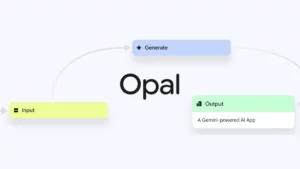
Why Application Discovery Is The Missing Link In Multicloud Identity
The complexity of multicloud environments has long been a thorn in the side of large enterprises. But, in my experience, the issue is even more pervasive and far-reaching than commonly understood. The missing link in these environments is not just about cloud security or governance, but rather something much more fundamental: application discovery.
For the average organization, determining the number and scope of their applications across various cloud platforms seems like a straightforward task. However, when you factor in multiple identity providers (IdP) and infrastructure layers, this simplicity quickly turns into chaos. The result is an absence of visibility, which leaves security teams exposed to orphaned apps, zombie services, and misconfigured access points.
The consequences of poor application discovery are far-reaching and devastating. Without a reliable understanding of their applications, organizations cannot effectively monitor or secure them. This lack of control allows malicious actors to exploit the gaps in their defenses with ease. It’s not just security that suffers; the financial impact of hidden costs should also be considered. Companies may unknowingly continue to pay for cloud compute and storage services tied to outdated apps, draining IT budgets without providing any business value.
The importance of application discovery cannot be overstated. Security teams must have a centralized registry of all applications, including those deployed across multiple IdP systems. This requires a shift away from static spreadsheets and manual lists towards automated tools that scan for deployed applications across AWS, Azure, GCP, and other platforms. By leveraging network-based discovery and API logging, organizations can identify unmanaged applications communicating with their infrastructure.
Moving forward, security teams must track key attributes for every application, including its hosting platform, infrastructure layer, API gateway, IdP system, MFA status, database connections, and login URL. These details are crucial in ensuring the authentication flows are properly mapped and that identity governance is integrated into the discovery process.
To prevent these blind spots from emerging, security teams must build a living, automated application inventory that continuously updates. This requires integrating cloud-native discovery tools with identity governance and administration (IGA) systems to track access permissions and MFA enforcement. Moreover, regular audits for misconfigurations, such as missing MFA or excessive access, must be performed.
The final piece of the puzzle is building security into the discovery process itself. This involves monitoring CI/CD pipelines to prevent retired applications from being automatically redeployed, identifying zombie apps that no longer have clear business owners but remain active, and ensuring the continuous refresh of tracked application data.
By following these best practices, large enterprises can establish a foundation of continuous visibility, ultimately strengthening their multicloud identity management strategy. The goal is not simply to discover applications, but to ensure they are secured, governed, and aligned with business needs.
Source: https://www.forbes.com/councils/forbestechcouncil/2025/03/27/why-application-discovery-is-the-missing-link-in-multicloud-identity/


